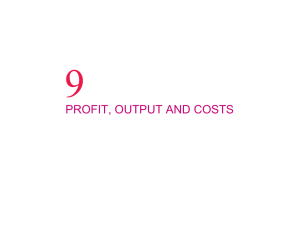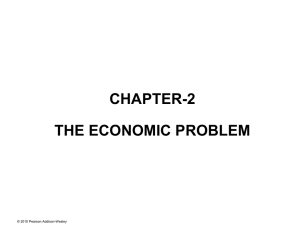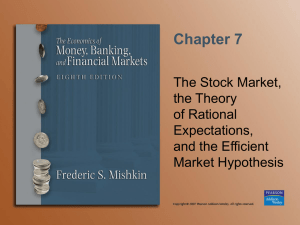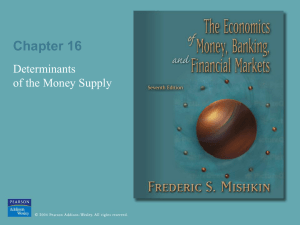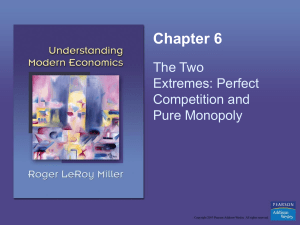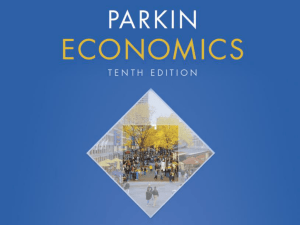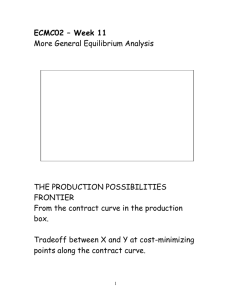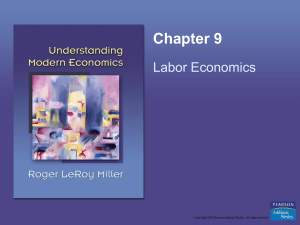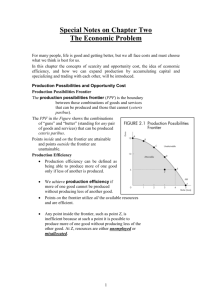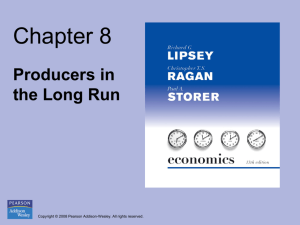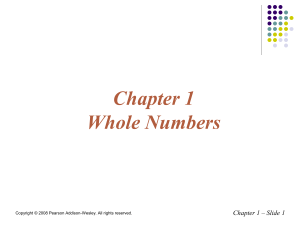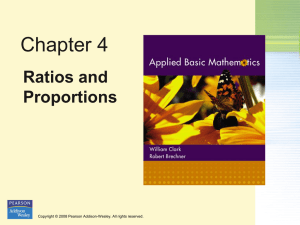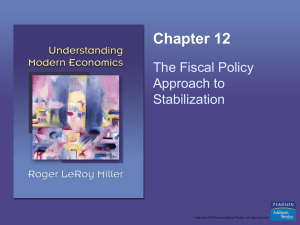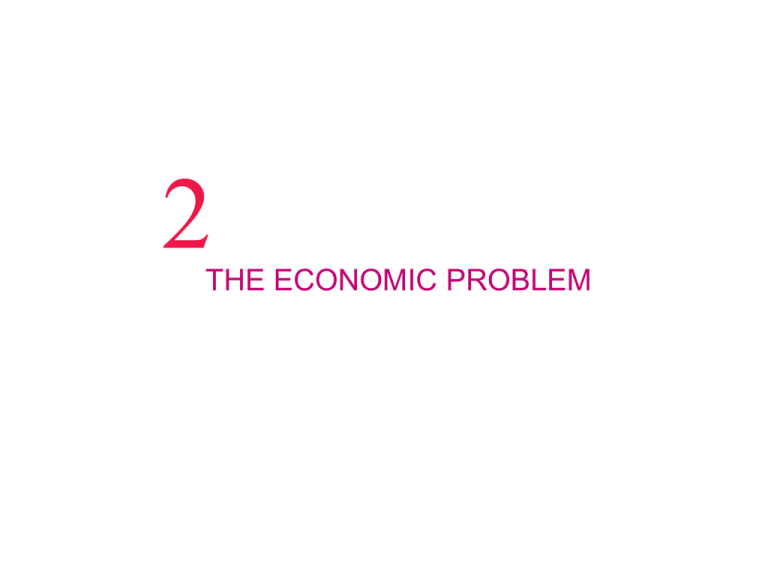
2
THE ECONOMIC PROBLEM
Q1: Suppose that when ABC produces 1 new drama
series in a season it gives up the chance to produce 3
new reality shows. This means that _________.
A the opportunity cost of a new drama series is 1/3 of a
new reality show
B the opportunity cost of a 1 new reality show is 1/3 of a
new drama series
C CBC has a comparative advantage in producing new
drama series
D CBC has a comparative advantage in producing new
reality shows
© 2012 Pearson Addison-Wesley
Q2: A country offers free university tuition to high school
students with a “B” average.
In 2008, the country raised the requirement so that
fewer students qualified for the scholarship. At the same
time, the country increased spending on health care.
Suppose that university education is on the y-axis and
health care is on the x-axis of a PPF. The country’s
change in spending would be shown as _________.
A a movement up along the PPF
B a movement down along the PPF
C a shift out of the PPF
D a shift in of the PPF.
© 2010 Pearson Addison-Wesley
Q3: Marginal benefit is the ______.
A opportunity cost of producing one more unit of a good
and increases as production increases
B opportunity cost of producing one more unit of a good
and decreases as production increases
C benefit from consuming one more unit of a good and
increases as consumption increases
D benefit from consuming one more unit of a good and
decreases as consumption increases
© 2012 Pearson Addison-Wesley
Q4: In the figure, if 2 million computers are produced
per year, then the ________ must be produced to
achieve the allocatively efficient use of resources.
A marginal cost of a computer
exceeds the marginal benefit of a
computer, so more computers
B marginal cost of a computer
exceeds the marginal benefit of a
computer, so fewer computers
C marginal benefit of a computer
exceeds the marginal cost of a
computer, so more computers
D marginal benefit of a computer
exceeds the marginal cost of a
computer, so fewer computers
© 2012 Pearson Addison-Wesley
Q5: The opportunity cost of economic growth is _____.
A future consumption that a nation gets if it gives up
some present consumption
B future consumption that a nation gives up to consume
more today
C present consumption that a nation gives up to
accumulate capital
D investment that a nation gives up to increase its
economic growth
© 2012 Pearson Addison-Wesley
Q6: Suppose a scientific breakthrough made free solar
power available in unlimited quantities in the United
States. The effect of this invention would shift the
_______.
A United States out beyond its production possibilities
frontier.
B United States inside its production possibilities
frontier.
C U.S. production possibilities frontier outward
D U.S. production possibilities frontier inward
© 2012 Pearson Addison-Wesley
Q7: In the United States, Texas ranks number one in
the amount of installed megawatts for wind power
generation and Utah ranks number one in the number
of ski runs. These facts point out that _______.
A Texas has a comparative advantage in wind power
generation
B Texas definitely has an absolute advantage in wind
power generation
C Utah should produce more wind energy
D Utah can produce wind energy at a lower opportunity
cost than can Texas
© 2012 Pearson Addison-Wesley




